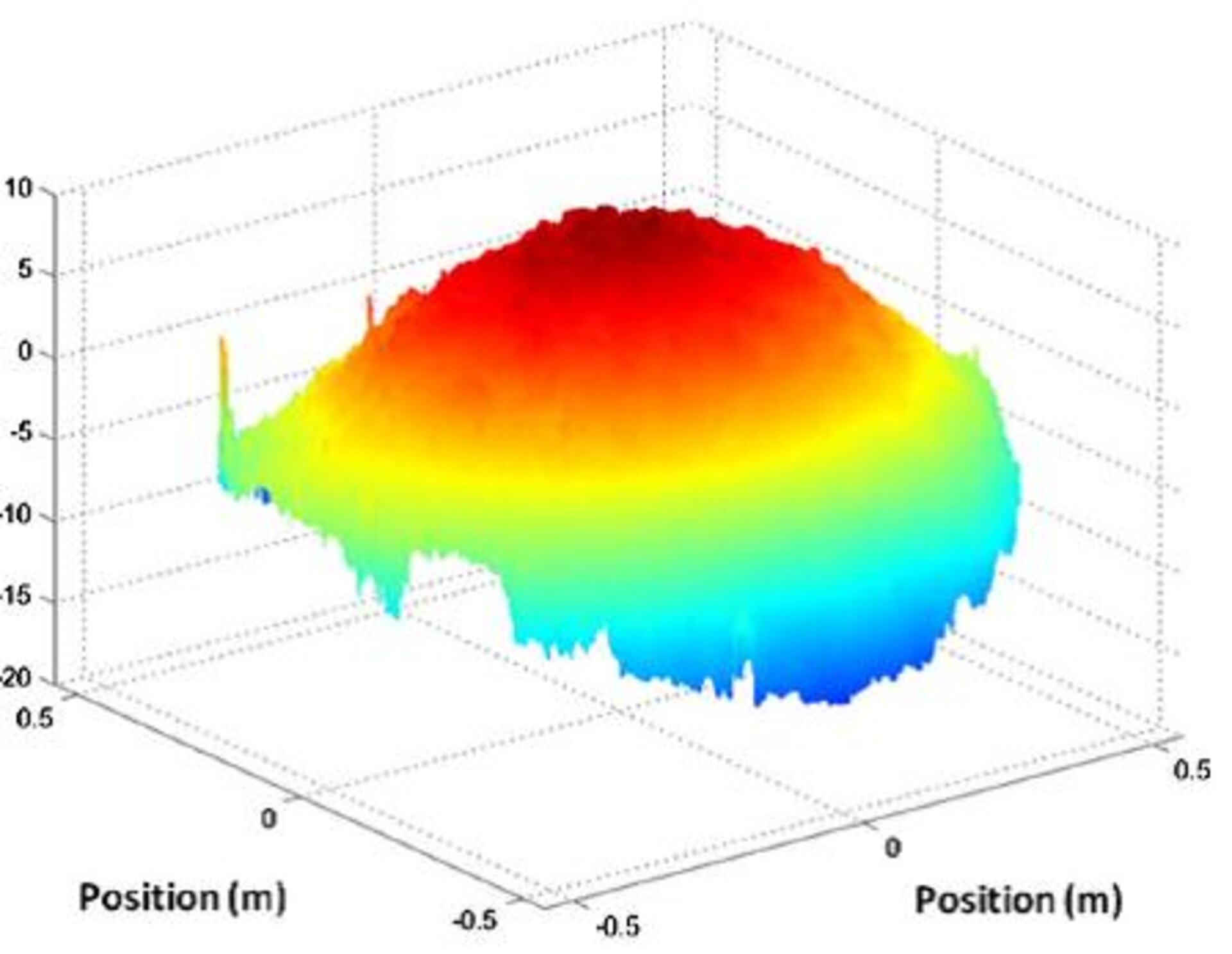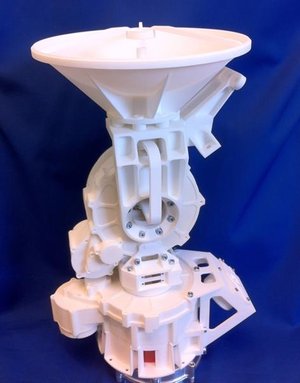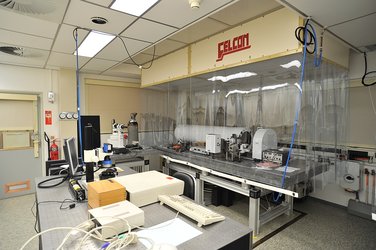Holographic health check for space reflectors catching cold
ESA is applying digital holography to assess how reflecting antennas stand up to simulated space conditions. This novel technique can detect buckling on a scale of thousandths of a millimetre across the entire diameter of a precisely-machined large reflector.
ESA and the specialist space test establishment Centre Spatial de Liège (CSL) in Belgium collaborated on the new digital holographic interferometry method, performing trial measurements on engineering models.
“Holograms are interference patterns of light recording the entire 3D structure of an object,” explained Dominic Doyle of ESA’s Optics section.
“In the past holograms were created using photographic plates, which was often a time consuming and messy process.
“These holograms are made with CCD imaging sensors instead, then analysed digitally in a computer processor. It is a quantitative process that picks out the very slight shifts we are looking for.
“And, equally importantly, it can be practically carried out in the working environment of a test centre without the complicated infrastructure required by other measuring techniques.”
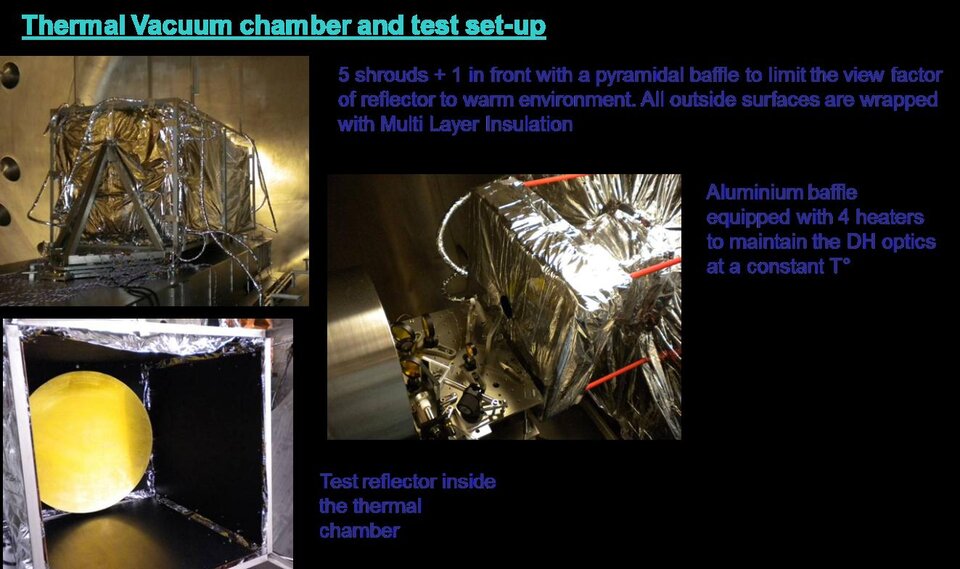
Reflecting antennas are essential items of space technology. Each one purpose–built for the reliable detection of faint cosmic emissions or the precise relay of communication signals – typically equivalent in power to a household light bulb –across many thousands of kilometres of space.
Modern reflectors for telecommunication satellites are made deliberately ‘lumpy’, for instance, to focus direct-to-home TV on given national markets while minimising signal spillover elsewhere.
And the ellipsoid reflectors serving ESA’s Planck mission – focusing millimetre-wave remnants of the very first light after the Big Bang into sensitive supercooled detectors, while minimising unwanted stray light – demonstrate the extreme complexity of modern scientific reflectors.
“The challenge with such increasingly large and complex structures is being able to reliably test that they will maintain their carefully engineered shapes in the extreme conditions of space,” remarked Dominic.
In the airlessness of space, temperatures can shift by hundreds of degrees instantaneously with the movement of a satellite from sunlight to shadow.
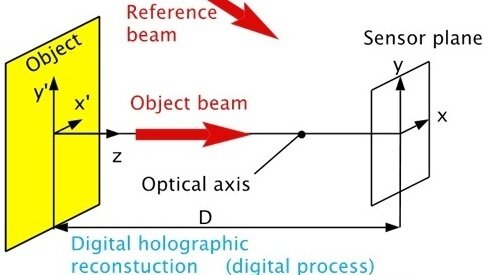
“Any deformation as a result could send a reflector out of alignment, endangering the mission,” Dominic added.
Ground testing involves a sophisticated version of ‘spot the difference’, as reflector temperatures are brought down from room temperature or hotter to the cryogenic cold of deep space.
Current measurement methods include videogrammetry based on video tracking of targets as well as visible light interferometry: laser light reflected from the reflector combines with light from a reference object to create interference patterns that highlight any deformation.
“But current videogrammetry techniques involves mostly stuck-on targets – not desirable for delicate space optics – and its accuracy is limited,” explained Dominic. “And classical interferometry can only be performed in real time, involving a very complicated set-up that must be maintained precisely throughout.
“In addition, the fine resolution of visible light used can lose track of abrupt displacement across very complex objects.”
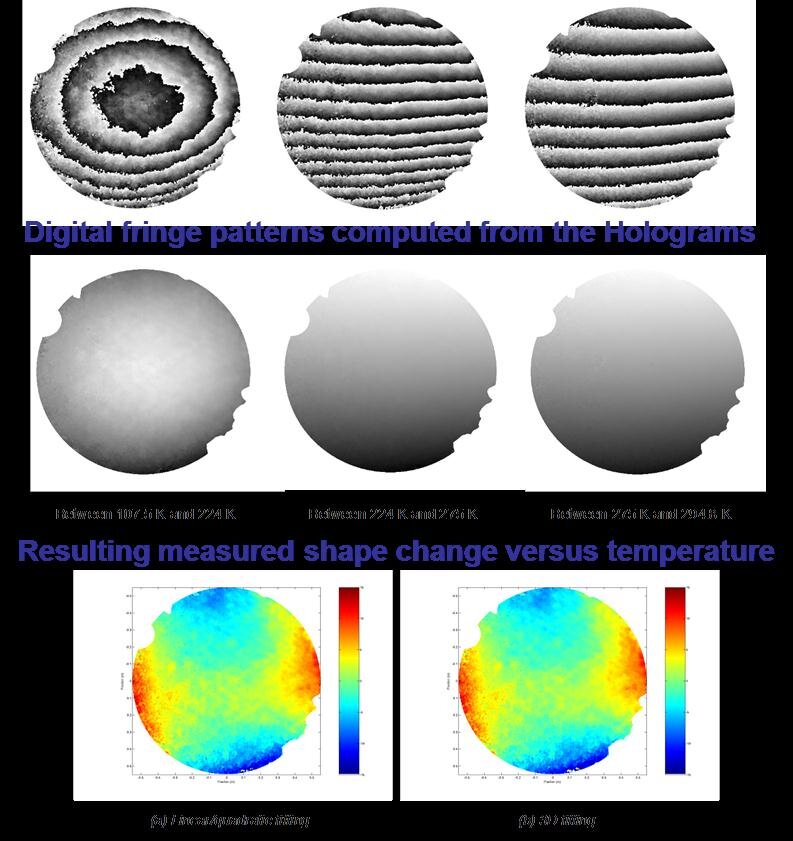
ESA and CSL performed their digital holographic interferometry with longwave infrared laser light, yielding a dynamic range sensitive distortions some five to ten times larger than visible light.
This meant large changes can still be tracked through the interference fringes that arise as the ‘hot’ and ‘cold’ holograms are combined. This wavelength also comes closer to the ‘working’ millimetre wave or radio frequency wavelengths of reflectors.
As an additional advantage, any displacement observed due to temperature-driven motion of the surrounding test setup can be digitally subtracted to concentrate solely on the reflector behaviour.
Undertaken through ESA’s General Support Technology Programme (GSTP) – helping to get promising new concepts to market readiness – the test campaign solved various practical problems, including the fact that holograms cannot usually be made of reflecting surfaces: this was solved using a diffusing element inserted into the optical system.

The results of the project were presented in detail in technical journal Applied Optics.
“The paper attracted particular comment as a newsworthy item by the editor,” concluded Dominic.
“This represents significant kudos for the team and a powerful justification of the relevance and utility of the Agency’s GSTP research and development programme.”


